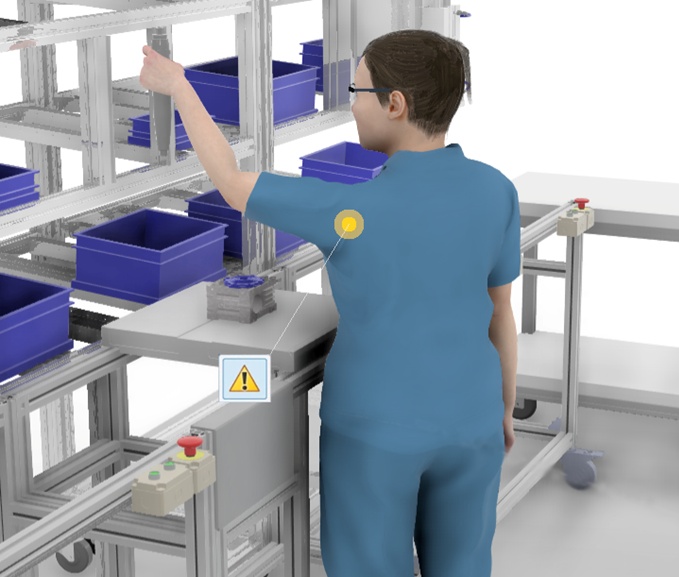Your workforce is as important as the products they design and manufacture. As such, it’s a top priority to ensure a safe and efficient workplace for your employees. As manufacturing organizations worldwide continue to design and develop more complex products that can perform better and faster, they must also consider human factors early in the product lifecycle, which will undoubtedly evolve as supply chains become more complex as well. Today, the biggest problem manufacturing workforces face is the risk of developing musculoskeletal disorders (MSDs)—painful disorders of muscles, tendons and nerves that affect the human body’s movement or musculoskeletal system due to continuous, repetitive movements on the plant or shopfloor. The implications of work-related MSDs are dangerous and far-reaching, impacting employees not just from a physical standpoint but also mentally and emotionally. In fact, musculoskeletal disorders were reported to result in 30% of days away from work (DAFW) in 2018 in the U.S. private sector alone.[1]
Ergonomic Workplace and a 3D Production Line
In the spirit of creating more ergonomic workplace conditions, we have some guidelines that will hopefully assist you in this endeavor, starting with a focus on leveraging 3D modeling and simulation for the manufacturing production and management software line. In this environment, placement is paramount to ensure that proper postures can be achieved and sustained by workers for their comfort and safety. But it is often difficult to have an initial idea of how high to place an object in a 3D model to be ergonomically advantageous and safe for performance in the real world.
How High Should It Be?
The ISO 14738 standard (Safety of machinery — Anthropometric requirements for the design of workstations for industries and services) provides us an easily calculable optimal hand zone, which limits the risk of MSDs.
Below, you can see the optimal hand zone for a 50th percentile American male (medium-sized male).

Ergonomic Workplace Guidelines
Ideally, you want to design your workstation for a wide range of people. For this scenario, we will consider the 5th percentile female and 95th percentile male to determine the optimal object location.
In the image below, we use the ISO 14738 to determine the optimal hand zone. Indeed, the standard reveals that the object should be located between the hip and shoulder. Using a rough measurement, we determined that the object should be located between 1 meter to 1.25 meters high in order to limit the risk of musculoskeletal disorders for the worker.

This is Not Enough!
This measurement gives you an initial idea of how high to approximately place your objects, but this is not enough. The best way to have an estimate of MSD risks is to use the DELMIA Ergonomic Workplace Designer (EWD). EWD employs modeling and simulation as well as our proprietary optimization technology, enabling users to create 3D models of factories, down to individual production lines and workstations, for ergonomic evaluation and optimization. The goal: to improve workforce conditions—from worker postures to the placement of equipment, machinery and objects, to name a few — for safety and enhanced ergonomics.
Thanks to industrial ergonomics software, you’ll be able to have an accurate worker posture representation and evaluation in 3D. You’ll be able to consider not only the object height but the manikin’s whole posture and the joint load, factoring in extremely precise parameters like the task frequency, object weight, etc.
Learn more with these Ergonomic resources:
- Read the DELMIA blog “Democratizing Virtual Ergonomics“
- Check out the demo “An Example of Ergonomic Workplace Design | DELMIA” on YouTube.
- Continue the conversation by joining the DELMIA Ergonomics Community here. Membership is free.
[1] U.S. Bureau of Labor Statistics. “Occupational injuries and illnesses resulting in musculoskeletal disorders (MSDs)” (May 2020)
